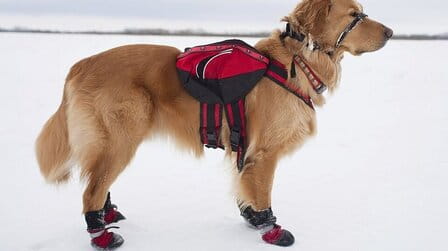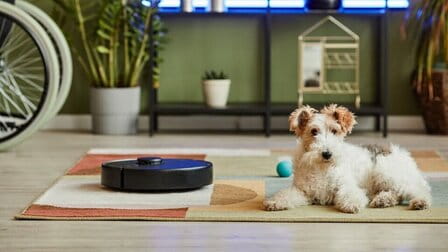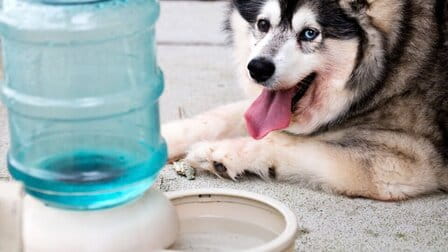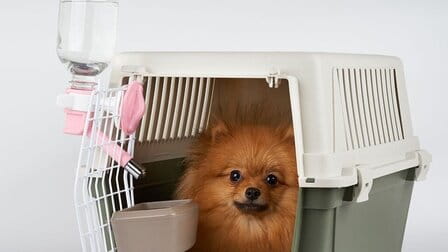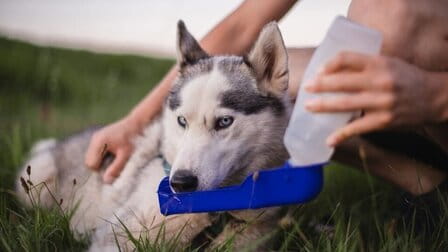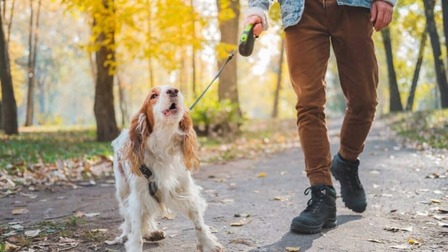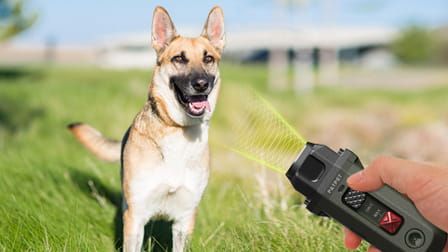Everyone wants our pets to be happy and healthy. Besides taking your pet for regular check-ups with your veterinarian, there are many things you can do at home to ensure and support your dog's life to the fullest. Below are some simple pet health tips on how to keep your pet healthy.
1. Proper nutrition
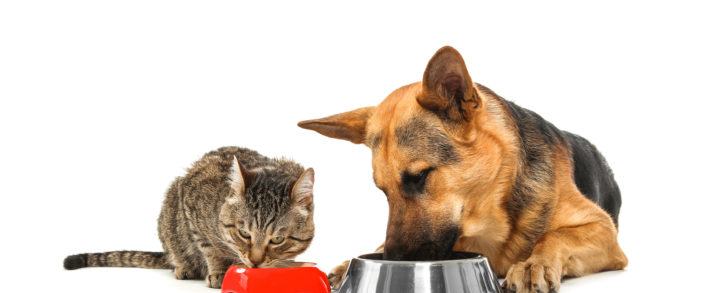
Feeding your pet the right amount and type of food, this helps them maintain a healthy weight, and is also the best way to prevent obesity-related diseases and prolong life.
Pets can usually meet their nutritional needs from a balanced diet with quality food, but check with your veterinarian to see if they need any supplements.
And make sure your pet has enough fresh water and keep an eye on the dog's food intake; Most veterinarians recommend that pets take up no more than 10% of daily calories.
2. Doing exercise

Regular walking, hiking, playing, and swimming can help keep your pet physically active and healthy. And don't forget to mentally stimulate too, and provide toys to play with, hide treats, build obstacles, and practice new tricks that will keep your dog or cat interested and engaged. Alternatively, you can change your walking routine to expose your pet to new sights and smells.
3. Regular health check

Annual health check-ups are recommended, and health screenings can help detect diseases early and spot warning signs of serious illness. In addition, may be recommended to remove plaque and tartar buildup.
4. Preventive medication

Take precautions that go hand in hand with regular vet checkups. It can help pets avoid unwanted health problems, like heartworm disease, flea-related illnesses, and flea-borne illnesses.
Besides, regularly brushing your teeth and letting your pet chew helps prevent periodontal disease, which can lead to more serious health problems.
5. Grooming

Trimming your pet's nails, brushing your pet's coat a few times a week, and bathing them regularly. This way to monitor changes in your pet's skin or coat, like dandruff, bald patches, or dry skin. Also check for lumps and swelling that can be cause for concern. It is advisable to consult your veterinarian for the best grooming procedure for your pet.
6. Affection

It is important to establish a strong relationship with a dog or cat that is good for both of you. Hugs, caresses, belly rubs, and even brushing are all ways to show your pet's love. This not only strengthens the emotional bond with the pet, but also promotes the pet to have positive interactions with other animals and people.
7. Socialization

According to the American Animal Hospital Association, "Early socialization and appropriate exposure to a variety of people and situations at an early age reduce the likelihood of antisocial or aggressive behaviors occurring. scared as an adult."
The formative years of a puppy or kitten range from a few weeks old to about 16-18 weeks old, which is also an important period for socialization. Make sure they have enough people and animals to interact with, not just for the first few months but throughout their lives. You can also choose from visiting family and friends, taking a trip to the dog park, going for a walk around the neighborhood, or letting your pet spend an afternoon at daycare after they've been informed. clear from the vet.
8. Spay/neuter

Forcing your pet to be immobilized has a number of benefits, possibly preventing some cancers and diseases, prolonging the life of your pet, and reducing aggressive behaviors in males. In females, it can prevent them from becoming estrous and reduce unwanted behaviors associated with the cycle, such as irritability, yelping and peeing.
9. Know what is "normal."

Can you see if your pet's behavior has changed recently? Can it scratch more than usual? Or does the pet eat more or less than usual? The issue of a change from the standard can be worrisome and presents some fundamental problems.
If you notice something unusual in your dog or cat, call your veterinarian to see if an examination is necessary.
10. Pet safety

There are a variety of ways to keep pets safe, like collars with ID tags, microchips, making sure their cages are free of safety hazards and keeping hazardous substances out of reach.
11. Temperature

A dog's temperature is usually 101 to 102.5 degrees Fahrenheit (38.3 to 39.2 degrees Celsius). To take a dog's temperature, a rectal thermometer is needed. Put some kerosene in the bulb of the thermometer. Then have someone hold the dog's head while you lift the dog's tail and insert the thermometer into the rectum for an inch or so.
Be careful not to let go of the thermometer and always hold it until the temperature is read (about 3 minutes for a mercury thermometer), gently remove it.
12. Pulse measurement and Heart rate

Because dogs come in a variety of sizes, their heart rates also vary. The normal heart beats between 50 and 130 times a minute when the dog is resting. For puppies, the heart rate is faster, and for older dogs, the heart rate is slower.
To check your dog's heart rate, place your fingers on the left side of the chest, where the strongest beats can be felt. To check if the pulse is at the same rate as your heart rate, you only need to gently press on the inside of the tip of your hind leg. There's an artery there and the skin is thin so it's easy to feel the pulse.
13. Considering dog urine

This is also an indicator of the dog's health and should be clear yellow. Mostly, adult dogs have one or two bowel movements per day. Stool should be brown and firm. If stools are watery or bloody, straining, or urinating too much or too little, call your veterinarian.
14. Measuring dog weight

The weight of a healthy dog is a balance between diet and exercise. If your pet is eating well and exercising but seems overweight or underweight, it means the dog has a health problem.
Don't let your dog get fat by eating too many snacks between meals; Obese dogs often develop serious health problems.
The way to tell if your dog is overweight is to feel their chest area. You should be able to feel the veins below the surface of the skin without much padding.
Conclusion
How to keep your pet healthy? And we've already answered above about ways that can help keep your dog happier and healthier.
With these simple tips, you can add age to your pet and ensure your dog's overall health.



